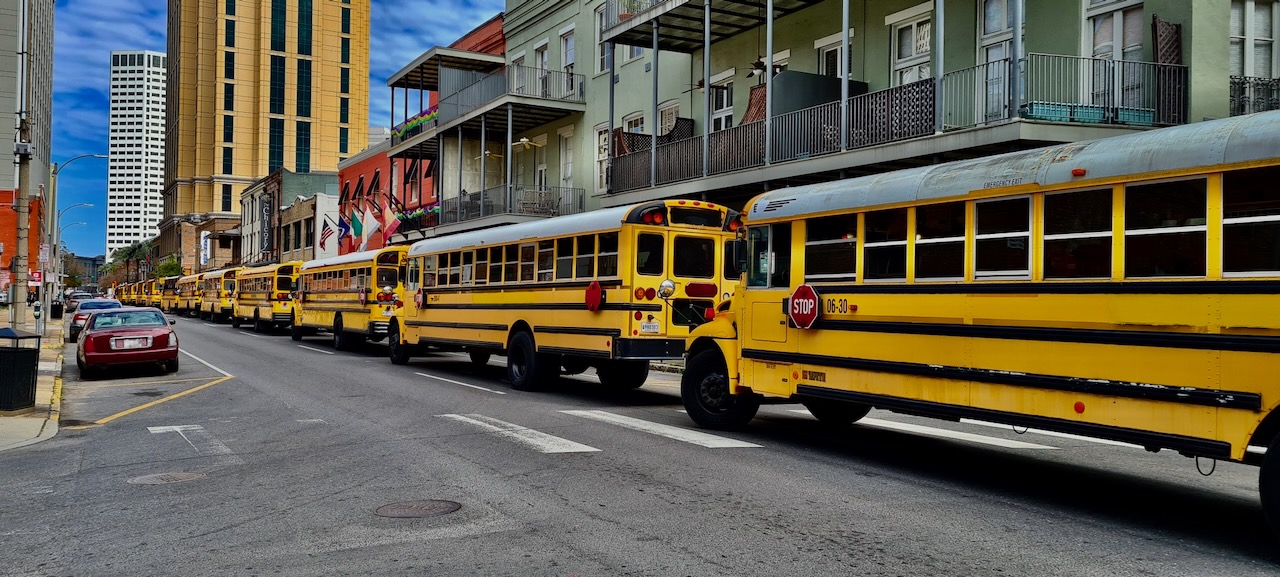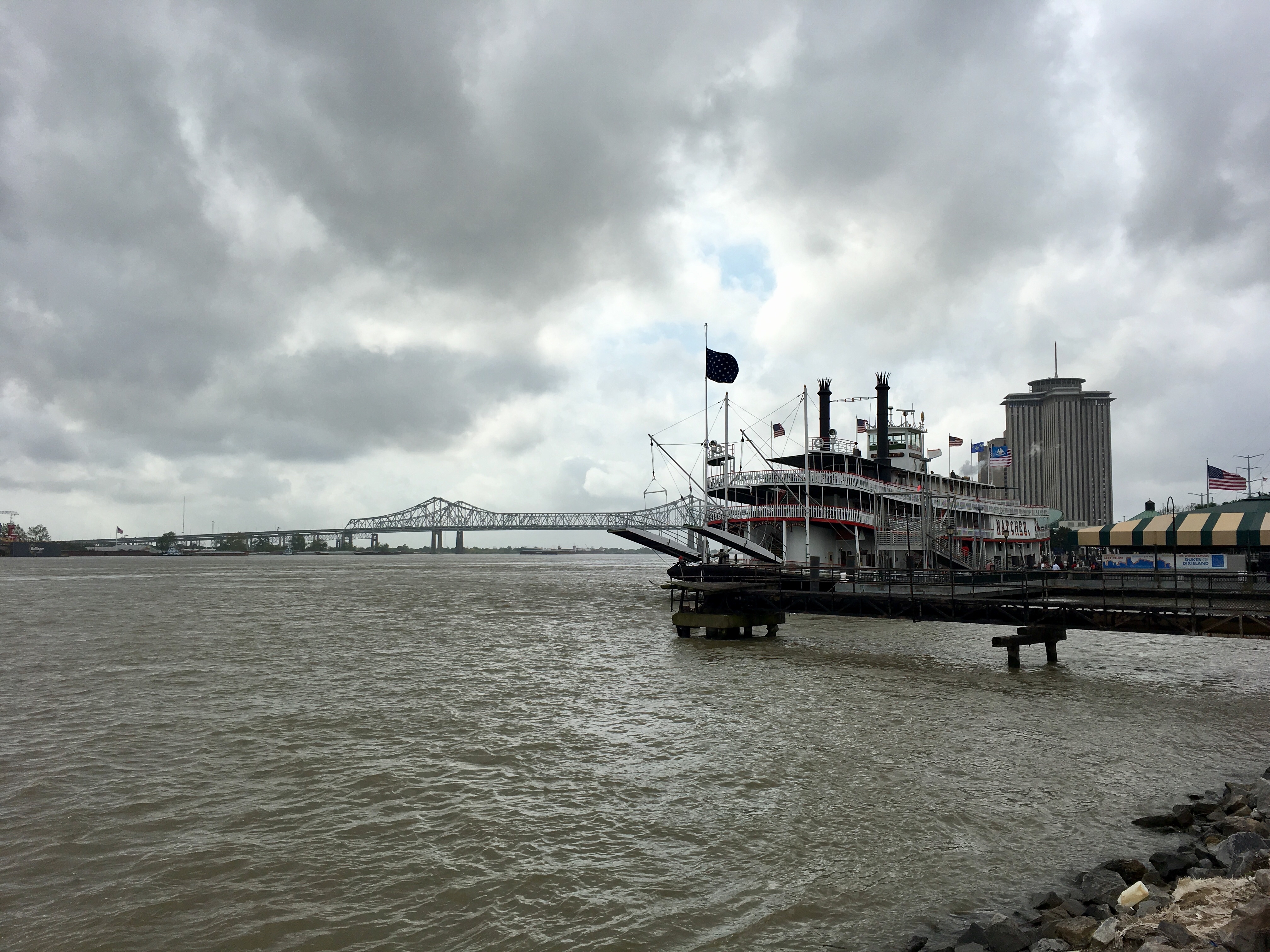
PD: In their essay ‘Making Groceries: Leadership, free spaces and narratives of meaning in post-Katrina New Orleans’ (2013), Menck and Couto argue that food can act as a ‘visceral representation of belonging’ (p. 424), that is, it can come both to define a place and be a profound means with which we construct, enact and experience ‘home’ through everyday practices. In the first few days of our being in the city the fundamental importance of food has been reiterated time and again by the people we have been speaking with. It has become apparent that eating, making, and sharing food is considered an essential part of the cultural identity of the city and its people. Indeed, the importance of food has become a refrain in all of the meetings we’ve had so far.
Welcome:
Maxwell Williams, the Artistic Director of Le Petit Theatre, spoke of food as a means through which one is welcomed to the city. An outsider to the city he came here for the job rather than the ‘outsider’ position being problematic he encountered people who said, in his words, ‘Welcome! Ya want something to eat?’.
Barbeque:
Our own encounter with this mode of welcome and generosity came just two minutes into meeting Laura Paul from the non-profit organization lowernine.org. Having arranged to be shown around their rebuilding efforts in the Lower Ninth ward of the city, we met Laura at the Voodoo Lounge on North Rampart Street. After climbing into her well-used pick-up truck and offering initial introductions, Laura turned to us to say she was hosting a BBQ at her house in the Lower Ninth for volunteers of the organization and some locals that evening and would we like to come? We’d be very welcome and, she said, it would ‘continue our education’ on the Lower Ninth.
Expectation:
For James Carville (ctd. in Menck and Couto), food in New Orleans is about ‘love, lust, art, taste and diversity’ (p. 419) and, for Menck and Couto, ‘food spaces, like farmers markets, restaurants, cafes and bars’ do ‘emotional work because they reinforce local cultural food traditions, feeding both the body and the soul.’ (p. 425). This was reinforced when we met David Hurlbert, who runs the Marigny Opera House, as he pointed out that people ‘expect food’ if they are attending an event, and he later waxed lyrical about the culinary heritage of the city and the centrality of food to living, working and visiting it. His enthusiasm for red beans and rice guided our lunch choice that afternoon.
Generosity:
On the first full day here we went to the Contemporary Art Centre to introduce ourselves to Neil Barclay (the executive director) and talk through the event we are running there at the end of our trip. He gave generously of his time and energy in engaging with the ideas of the project. As an early encounter in the city, it was exciting to explore the potential of the event to open up new conversation on arts, the city and its challenges with him. And we were struck by his comment that while the arts practitioners of the city (especially at an institutional level) know each other and support one another, they don’t necessarily talk collectively about concerns they have in, for, and with the city. It seemed to open up the potential for our work here to contribute something, however small.
But how best to do this? We came in with a plan to present work, to ask for respondents, to facilitate a workshop-type event. Neil mentioned it’d be good to gather around a glass of wine and some food, and when we said we hadn’t arranged for food he immediately insisted this was a necessity and that he’d be happy for CAC to provide it. Beyond the generosity of this offer, the inclusion of food changes the dynamic of the event. It makes it more collegiate, more social, more embodied and, crucially, we realized it returned us to focusing on discussion. Eating has changed how we will run the event: made it more useful, less about us and more about a conversation about ideas.
What has become clear since landing is that eating is fundamental to the city’s identity.

SA: We’re at St. Roch Market, on St Claude Avenue. It is an old, single-storey building, with a high metal and glass roof, held up by central pillars. There are stalls down the long sides of the interior and tables and chairs in the centre: high wooden tables with stools, plastic tables and chairs at either end. We had gone there for coffee, sitting outside in the heat of the day. As time passes, the building begins to fill a little, there are families, people in suits who may work locally, soldiers in fatigues, one at least eating alone. This, it appears, is a popular place. It’s also racially mixed, there are a range of ages. I chat to a mother and daughter outside, asking about where we should leave our coffee mugs, they ask about our accents, we comment on the day.
We wander between stalls, reading the large menus printed on signboards above each one, and looking at the food laid out on counters. As we pass, people seem in good humour, there are friendly family conversations, people stroll easily from stalls to tables. There may be tourists here, and others for whom this place is unfamiliar, but the suits and fatigues suggest this is a place used and known by people from the city, if not from near neighbourhoods.
We order a ‘sampler’: shrimp and grits, red beans and rice, crawfish poutine. Standing reading the menu, Patrick remembers David Hurlbert’s comment about the importance of food, specifically red rice and beans, to the city. It seems appropriate we try this for ourselves. It’s the first meal where I stop to attend to the ingredients, where I send an inexpertly taken photo home. The crawfish melt in the mouth (a wondrous sensation that I have a day or so later with braised beef cheeks at Sylvain, on Chartres Street).
As we interview artists in New Orleans, they talk to us about food. One interviewee easily elides ‘welcome’ and ‘food’ as if they are one and the same. They speak of the importance of food to the South and to this city. If we are to talk about artistic practice in New Orleans, then we need talk about the food that, artists tell us, again and again, is so critical to life in the city. Of course, this is complex. Writing in 2007, and based on his interviews with tourism professionals, Kevin Fox Gotham comments that ‘food, music and history constitute the “holy trinity” of New Orleans tourism that unites the diverse cultural attributes of the city into a set of easily recognized and evocative themes’ (Fox Graham, 2007, p. 834). While Fox Graham suggests this message promotes the city, it also serves to ‘minimize the uncertainty of urban reality’ (Fox Graham, 2007, p. 834). As tourists, of a kind, we are at risk of reading this elision of art and food through city marketing strategies. Yet, sitting in the market, an hour or so after talking to Hurlbert, and a fairly short walk from the Opera House, we’re aware that there is work to be done on eating and arts practice in New Orleans, work that may be daily practice in the city but that is outside any perceived ‘trinity’ and too little discussed as a critical element of arts practice in the city.





